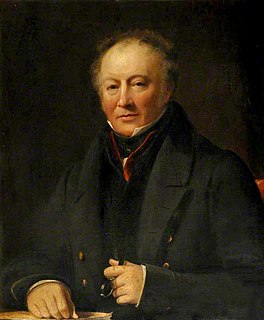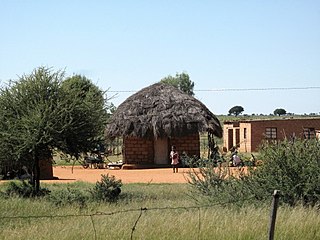Petrus Johannes Truter (17 December 1747, in Cape Town – 31 January 1825, in Swellendam, Overberg) was an explorer and official in the (Dutch?) East India Company,[ clarification needed ] a Member of the Court of Justice, and a Commissioner of Police.

Cape Town is the oldest city in South Africa, colloquially named the Mother City. It is the legislative capital of South Africa and primate city of the Western Cape province. It forms part of the City of Cape Town metropolitan municipality.

Swellendam is the third oldest town in the South Africa, a town with 17,537 inhabitants situated in the Western Cape province. The town has over 50 provincial heritage sites, most of them buildings of Cape Dutch architecture. Swellendam is situated on the N2, approximately 220 km from both Cape Town and George.

Overberg is a region in South Africa to the east of Cape Town beyond the Hottentots-Holland mountains. It lies along the Western Cape Province's south coast between the Cape Peninsula and the region known as the Garden Route in the east. The boundaries of the Overberg are the Hottentots-Holland mountains in the West; the Riviersonderend Mountains, part of the Cape Fold Belt, in the North; the Atlantic and Indian Oceans in the South and the Breede River in the East.
P.J. Truter was one of 14 children born to Jan Andries Truter and Maria Kuypermann. He married Johanna Ernestina Blankenberg on 18 April 1773, who bore him 7 children including Anna Maria Truter, who later became the wife of Sir John Barrow, 1st Baronet. [1]

Anna Maria Truter, Lady Barrow was a Cape Colony botanical artist. By the time she left the Cape in 1803, she had assembled the first known portfolio of Cape flower studies and landscapes. Her husband, Sir John Barrow, 1st Baronet, became Second Secretary to the Admiralty in 1804, and authored An Account of Travels into the Interior of Southern Africa, in the Years 1797 and 1798.

Sir John Barrow, 1st Baronet, FRS, FRGS was an English statesman and writer.
In 1801 P.J. Truter helped lead the Truter-Somerville Expedition along with William Somerville. The expedition included John Barrow (who would later marry one of his daughters), Samuel Daniell, and missionaries Jan Matthys Kok and William Edwards. [2]

William Somerville FRS FRSE FLS LRCP was a Scottish physician and inspector of the Army Medical Board. He was the husband of eminent mathematician and scientist Mary Somerville and father of four.

Samuel Daniell was an English painter of natural history and other scenes in Africa and Ceylon.







